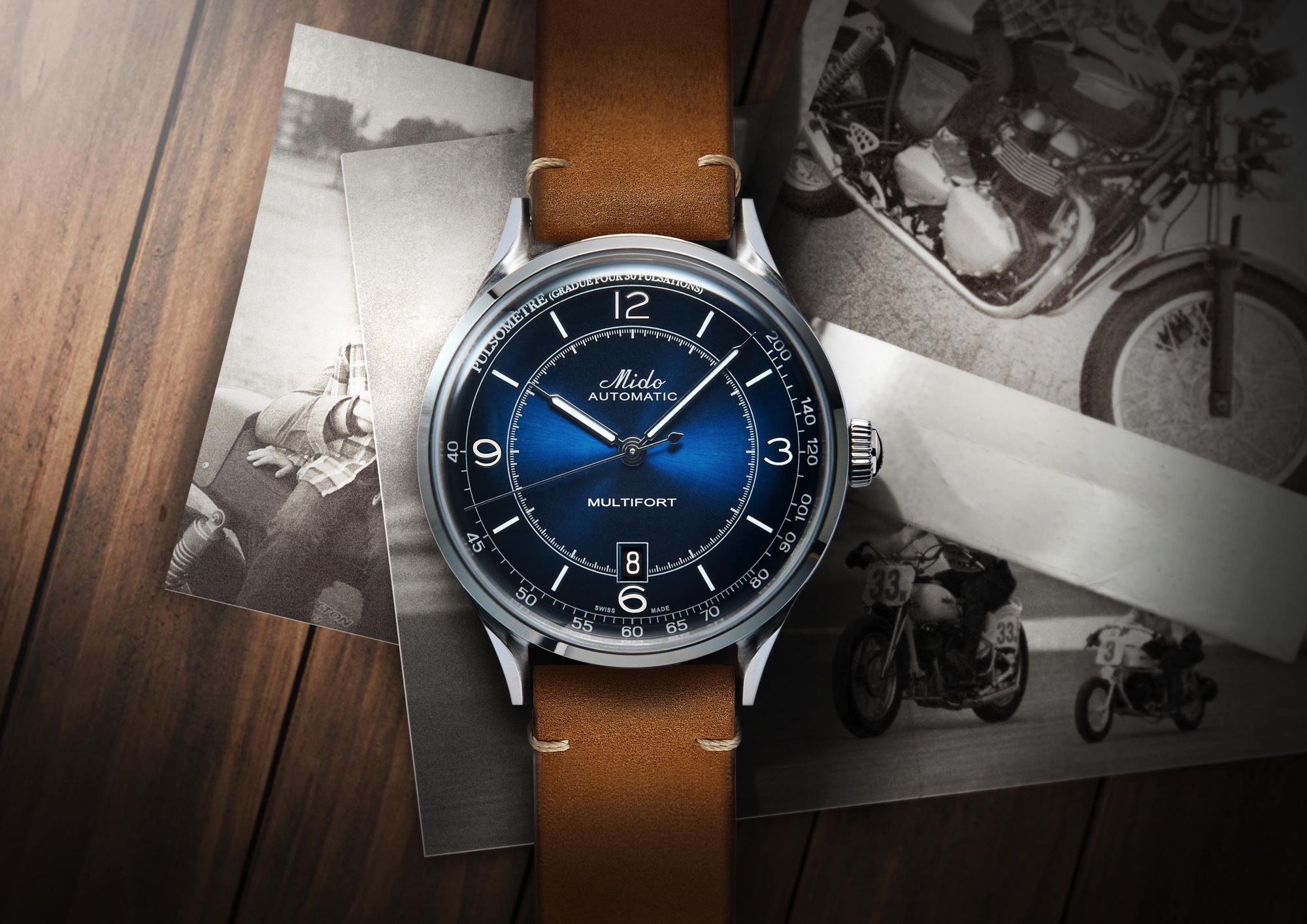Today, the accessibly priced Swiss-based watch brand Mido announced a new watch called the Multifort Patrimony, with a gradient dial, a pulsometer scale, and a sub one thousand dollar price point.
The stainless steel Multifort Patrimony watch (Ref. M040.407.16.040.00) measures 40 mm in diameter, has a domed dial, a domed sapphire crystal, a screwed sapphire caseback, is 50 meters water-resistant, and is available in three different dial variations: blue with a steel case, anthracite with a steel case, and black with a PVD-plated rose gold steel case. All three versions have a sunray satin-brushed gradient dial with printed, luminous Arabic numerals at 12, 9, 3, and 6, and with indices for the rest of the hours. The innermost scale reads seconds/minutes and is printed in white.
Since the heart rate is the number of times the heart beats in the space of a minute. The pulse rate is exactly equal to the heartbeat. Taking the pulse is, therefore, a direct measure of heart rate. However, instead of counting all of the heart beats over a minute, by using a pulsometer, the number of beats, and therefore the time it takes to measure your pulse, is significantly reduced.
Most pulsometers are calibrated to 15 or 30 pulsations, in which case you count up to that number of beats. Considering this pulsometer uses a sweeping seconds hand, as opposed to a push button controlled chronograph seconds hand, this might be a little less accurate as you have to wait for the seconds hand to hit 12 o’clock versus just hitting start on the chronograph. Either way, both types of so-called “Doctor’s watches” offer a charming, old-fashioned method for measuring your pulse, compared to modern professional medical grade tools (digital or mechanical) which are going to be the most accurate.
On the outer edge of the dial is a printed pulsometer scale (calibrated to 30 pulsations) meaning to calculate your heart rate/pulse, you simply start counting the number of heartbeats the moment the seconds hand hits 12 o’clock, and then once you’ve reached 30 heartbeats, the number that the seconds hand is pointing to on the outer ring at that time is the number of heartbeats per minute (or pulse).
Driving hours, minutes, central seconds, and the date is automatic caliber 80, which is based on ETA C07.621. The movement measures (25.60 mm x 5.22 mm), runs at a rate of 3Hz, has 25 jewels, an 80-hour power reserve, and Elaborate finishing, as well as a rotor with Geneva stripes. Each movement is adjusted in 3 different positions for increased precision.
This retro-styled timepiece features a throwback to the past with design cues such as a sector dial, luminous syringe-shaped hour and minute hands, a boxy sapphire crystal, a vintage-style leather strap with two stitches, and of course the pulsometer scale.
Retail is $890 in steel and $1,000 in PVD rose gold.






